Review by Yousef Ghorbani
Final Fantasy VII Rebirth carries the huge responsibility of rebuilding a significant portion of an iconic title in the history of video games. It also provides a satisfying conclusion to events at the end of “Final Fantasy VII Remake.” But how successful has it been in this regard?
Final Fantasy VII Rebirth covers the events of the original game from the of departure from Midgar to the end of the first disc. After the events that occurred in Midgar, Cloud and the group are after Sephiroth and this search takes them on a journey around the world where all sorts of unexpected events happen, and we will get to know each of the characters better.

Just like the original game, in Final Fantasy VII Rebirth, the characters are the driving force of the narrative. From the start of the original game and its remake, part of the identity of each of the main characters was shrouded in mystery piquing your interest and making you want to know more about each of them; What misfortune has befallen Barret? Who is Sephiroth? Why is there a talking dog in the game and … After leaving Midgar, the original game gave satisfying answers to these questions and introduced you to the backstory of many of the characters and as a result, made you love them even more!

Rebirth also takes this approach and in addition to dedicating a part of the narrative to pay special attention to each member of the group and giving everyone the chance to shine, it also portrays the background of various characters well, sometimes with small changes and more details that are positive if we look at them as a whole.
Each of the characters, especially the group members, have their own unique characteristics. Just like the original game and the remake, Rebirth also does an extraordinary job of portraying these traits. It doesn’t matter if you’re in the middle of an important and dramatic scene,or just walking around with the other group members, listening to the conversations between the characters and their reactions and views on various events and scenarios is engaging in itself and makes it fun to just be with them.
One of the most important factors is the excellent voice acting which is full of energy and in line with the narrative tone of the game, which brings life to each of the characters in a way that was not possible in the original game. Of course, the voice acting of some characters is better than others, but overall the game’s voice acting is really great and personally, I can’t imagine the characters with any other voice!
Another positive point about the game’s voice acting is the less amount of sounds that are generally referred to as ‘Anime Grunt’. There is no inherent problem with Anime Grunt and these sounds are a way to show the feelings or reactions of the characters without using dialogue; but I think everyone agrees that in the remake, a little too much of these kind of sounds were used and as a result, some interactions between the characters seemed very weird; fortunately, as mentioned, the use of this has decreased in Rebirth and these sounds express the reactions and feelings of the characters, without creating strange situations and interactions between them.

The only minor issue with the characters is related to Cid. I don’t want to exaggerate this issue, as Cid doesn’t play a very prominent role in the story of Rebirth and only appears in a few scenes. But even in this limited time, the difference between the behavior of this character in Rebirth and the original version is noticeable. To put it simply, Cid in Rebirth is not as cranky as he should be!
Making slight changes to a character is not necessarily bad, and as mentioned, Cid doesn’t have a very prominent presence in this game and we will see more of him in the next game in the series. However, if Cid, a character who is popular among fans more than anything else because of his unique personality, changes in a significant way, it’s really a pity. Especially considering the fact that the portrayal of other characters in the remake and Rebirth was very similar to the original game.
One of the things fans were concerned about after the end of Final Fantasy VII Remake was the introduction of too many changes in the continuation of the story and turning it into something completely unfamiliar from the original game. Fortunately, Final Fantasy VII Rebirth does not do this and most of the game time is spent on events that existed in the original game.
Of course, the details of these events in both games are not the same and there are small changes and details between the common parts of the two games and how some events happen. But overall, almost all scenarios and important events of the original game also exist in Rebirth and if there is a memorable scene for you from any part of the original game, you will definitely see it in Rebirth. So, if you are excited for Final Fantasy VII Rebirth to experience memorable moments of the original game and with the features expected from a modern AAA game, the game will not disappoint you.
The best thing I can say about the narrative of Rebirth compared to the original game, which is sometimes even better than being completely faithful, is that the narrative of both games and the common events in them evoke a certain feeling. If there is a part of the original game that gives you a special feeling when you experience it, you will probably evoke the same feeling when you experience that part in Rebirth. This similar feeling is not limited to specific scenes and generally, it can be said that the narrative tone and dialogue writing of both the original game and Rebirth are very similar and have a feeling that if I want to describe it, I would say that the narrative tone and dialogue writing of both games are light-hearted and yet very dramatic, and you can imagine it as something along the lines of Disney animations of the 90s.
Such a feeling is not for everyone and is rarely seen among AAA games, and if the creators wanted, they could have taken a serious or so-called edgier narrative tone. But if you loved the original game because of its narrative, this narrative tone is for you, and I’m glad that the creators have prioritized the fans of the original game in this regard and by doing this, they have made the narrative of this title more unique compared to many other games!
In order to turn a small part of the original game into a full game with a three-act story, Final Fantasy VII Remake had to spend significantly more time than the original version on each part of the game and its narrative. In the best case, this extra time could be described as “expanding” those parts, where the Remake would delve deeper into many of the events than the original game, providing a better understanding and perspective.
However, in many cases, this extra time was nothing more than “padding”, which could lead to less entertaining moments in the game and its narrative. Fortunately, in Final Fantasy VII Rebirth, not only is there almost no padding, but what the game does with different parts of the narrative is so good that “expanding” does not do it justice!
The best way I can describe it is that Rebirth turns each part of the original game into an event; for example, imagine a scenario from the original game. Instead of just recreating that scenario, Rebirth uses its time to delve into all the interesting things that scenario could entail; what reaction will a certain character have to this scenario? Will there be interesting interactions that could occur between different characters due to being in this particular scenario? What interesting side scenarios exist that could arise from being in this specific situation and …
The game uses its time to delve into all these things and makes full use of the narrative potential of different parts. As a result, when you play each of these parts in Rebirth, you don’t feel like you’ve just got past another event; you have experienced all the interesting things that a particular scenario had to offer and after finishing each of these parts, you feel like you’ve had an unforgettable experience!
If you have played the original game, you know that after leaving Midgar, various events and scenarios occur that can only be described as “ridiculous” and over the years, it was a question for many how the game would approach these strange scenarios in the remake; now that I have played the game, I can say that the answer to this question is simple: the game embraces the funny nature of such scenarios and portrays them in all their glory!
The game’s approach to “turning different parts of the game into an event” that was discussed in the previous paragraph, even more so for such scenarios, and the experience of these parts of the narrative in Rebirth, is very attractive and memorable.
Perhaps I can say that Final Fantasy VII Rebirth has the most beautiful cutscenes I have ever seen in video games! Conceptual and purposeful shots, cinematography, choreography, and … are all first-rate and appropriate for the scene, all of which you can expect from the game’s cutscenes; but by far, the thing that makes the cutscenes in this title more beautiful than others is the framing; throughout the game, there is almost no shot where everything is not placed in the frame in the most beautiful possible way and for example, some characters or important parts of the environment are not cut off unusually and half-way by the frame and do not fit in it; for this reason, it is clear what each shot intends to portray and with what purpose and always draws the viewer’s attention to where it should be.
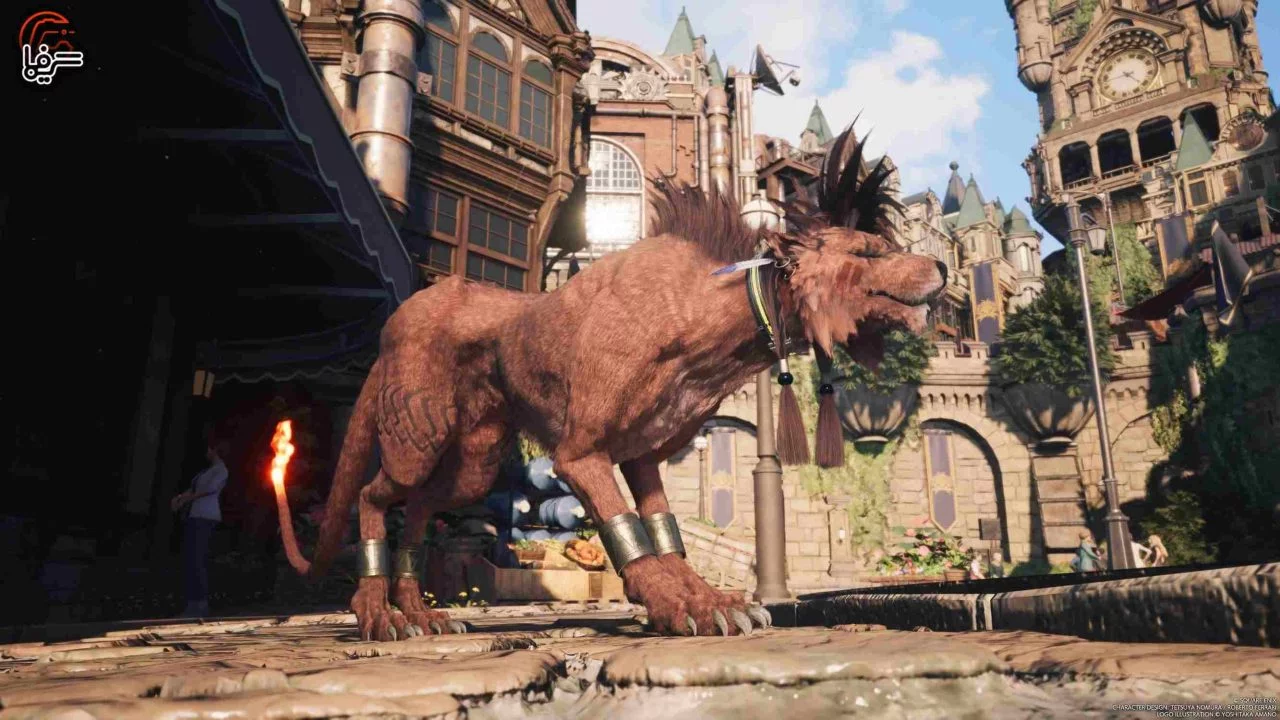
One of the things the game does frequently, which never becomes tiresome, is quickly zooming in and then filling the entire frame with a character and their weapon. Every time the game does this, the resulting frame is so aesthetically pleasing that it could be used as a wallpaper!
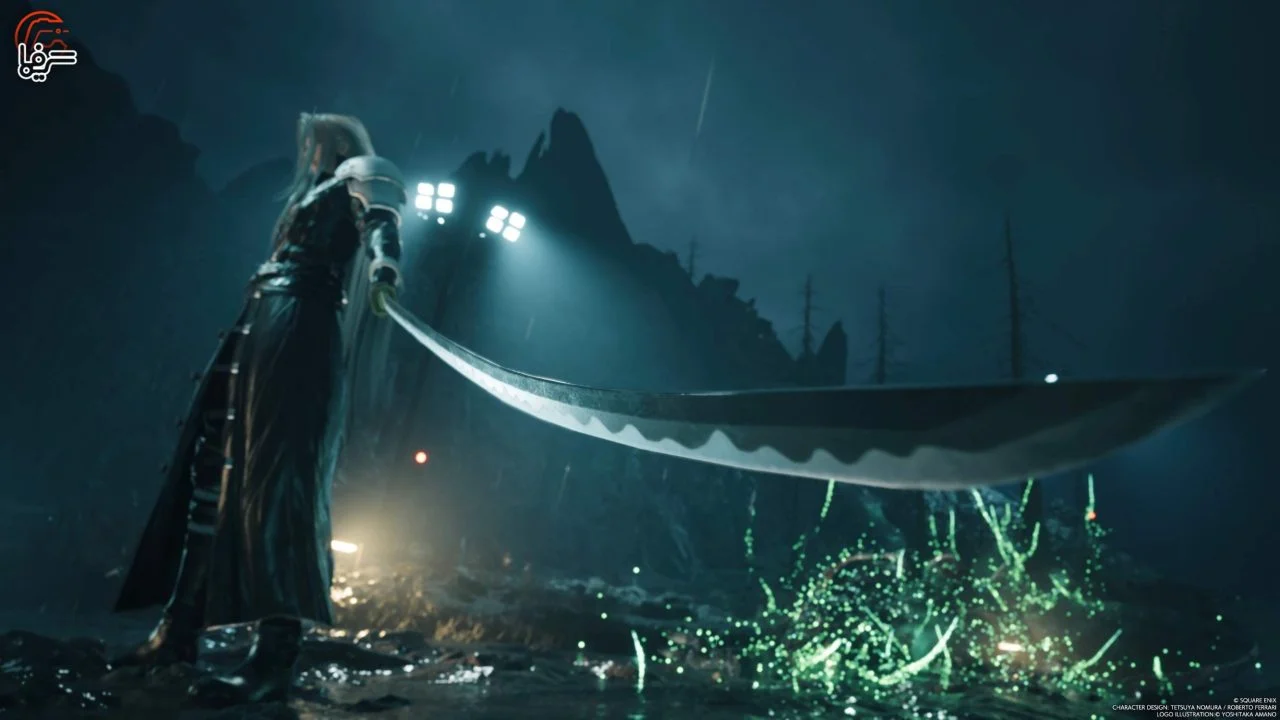
Animation is another thing that contributes to the allure of the cutscenes and the animations of all the characters, especially their faces, are incredibly beautiful and effectively express their emotions and personality traits. There’s a unique beauty in Final Fantasy VII Rebirth’s cutscenes that transcends linguistic boundaries. I can easily imagine that even if I didn’t understand what the characters were talking about, I would still be completely engaged in watching the game’s cutscenes! It’s great to say such a thing about the cutscenes of any game, but for a remake of a title where almost none of its cutscenes had dialogue and yet was still able to captivate players, this feels right and appropriate!
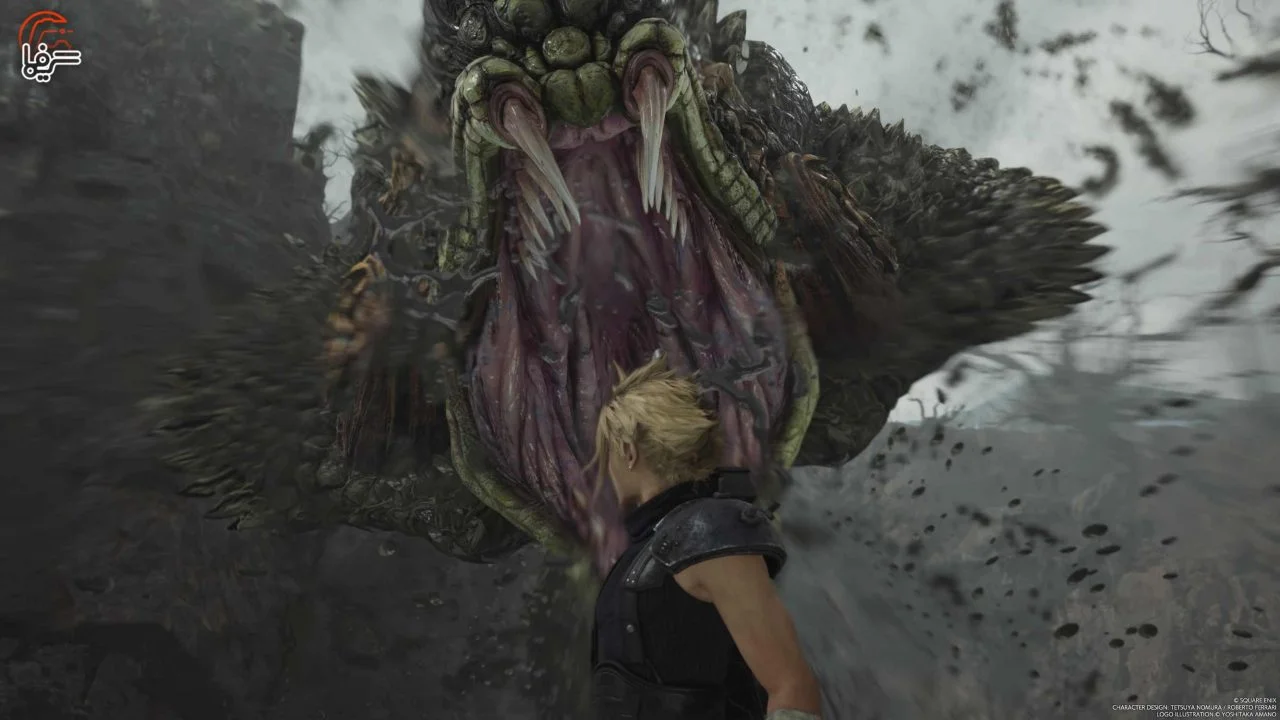
Of course, all this praise doesn’t mean that every part of Final Fantasy VII Rebirth’s narrative works. One thing the game does a lot is ending most missions in a very epic and action-packed way. Most stages of the game end with a massive fight where it seems the life or death of each character is at stake. This in itself is not a problem and usually makes the end of each stage very exciting. But it becomes problematic when the game uses this ‘epic ending of missions’ less as a meaningful decision that leads to improving the narrative, and more as a gimmick. This can reduce the impact of some parts of the narrative.
For example, without going into too much detail, in one part of the original game, there is a face-to-face battle between two characters. This battle is not epic or grand at all and is clearly brutal. Victory in this battle does not feel like a success and immediately after it ends, an unexpected event occurs that more than anything else, creates a sense of emptiness in the audience. In Rebirth, these events also exist at the end of one of the stages, but here, this sequence is not just about a face-to-face fight between two characters.
In Rebirth, while these two characters are fighting, other characters are fighting a legion of soldiers and trying to stop them, immediately after the fight between the two characters, a fight with another huge boss fight begins and immediately after that boss fight, a long chase and escape scene with shooting and a helicopter occurs and ends the stage!
These events make one of the scenes of the original game that was effective because of its simplicity, not as impactful as it should be in Rebirth and instead of giving this sequence a chance to breathe, the game constantly interferes with other things in it. This is an example of the negative impact that ending most stages in an epic and grand way can have on the narrative and the impact of some events, and there are one or two other examples of such a thing, although the negative impact of other examples is not as severe as the example mentioned.
Before moving on to the gameplay, it is worth talking about two other things in a very vague way and without any spoilers. First of all, what are the changes made in the narrative due to the end of Rebirth? The game answers many of the questions that were raised by the end of Remake and at the same time, it raises new questions. If I want to say in general, the game in most cases (emphasis on ‘most’) deals with this issue with great caution and is aware of its sensitivity; if you were one of the people who did not like the end of Remake and its promise, I doubt that Rebirth will make a change in your opinion; but the changes made in Rebirth are not as strange and weird as some were terrified of.
The next point worth mentioning is the game’s ending. This concept has been very sensitive and even if I say the slightest thing about the details of this issue, it will be considered a spoiler; so with this in mind, this is what I say about the ending: although the ending could be a little better, I personally really loved the game’s ending! It’s been about a week since I finished the game and the ending is something I keep thinking about and some of its shots and dialogues have stuck in my mind; if I want to be honest, I really don’t remember the last time I had such a reaction to an ending and I can say with ease that the game’s ending was able to be impactful.
Final Fantasy VII Rebirth’s gameplay uses the foundation built by the first game and improves or expands it, or makes minor changes in it. To start with the improvements of Rebirth’s gameplay, what better place is there than level design?
The level design of modern Final Fantasy titles has always been very weak; player interactions with the stages of these titles are summarized in the simplest possible things like opening doors or climbing ladders, the stages and the path that the player must take are very limited and clear and usually all around these paths have collision, the only difference between the stages is in their appearance and where you play does not have any effect on the gameplay and does not lead to the presentation of a specific and unique experience in a stage and …
Fortunately, Rebirth stands head and shoulders above the rest with the best level design in modern titles of the series! To start with, the natural and free interactions you can have with the environment in Rebirth are far more than other modern titles in the series. Instead of being forced to follow a specific and limited path, in Rebirth you can freely move up and down different levels, you can swim in the water, the environment around you is impactful in some fights and you can use it and … Such interactions may seem very simple and obvious (which they are), but the changes these small interactions make compared to other modern titles in the series are hugely effective!
Because of these interactions, there is a kind of real freedom in Final Fantasy VII Rebirth that makes exploring more areas enjoyable and this sense of freedom is especially important for this title; because the sense of freedom and the possibility of discovering a large world was one of the things that leaving Midgar in the original game brought with it and if these interactions did not exist, this sense of freedom and exploration could completely disappear and cause serious damage to the game experience.
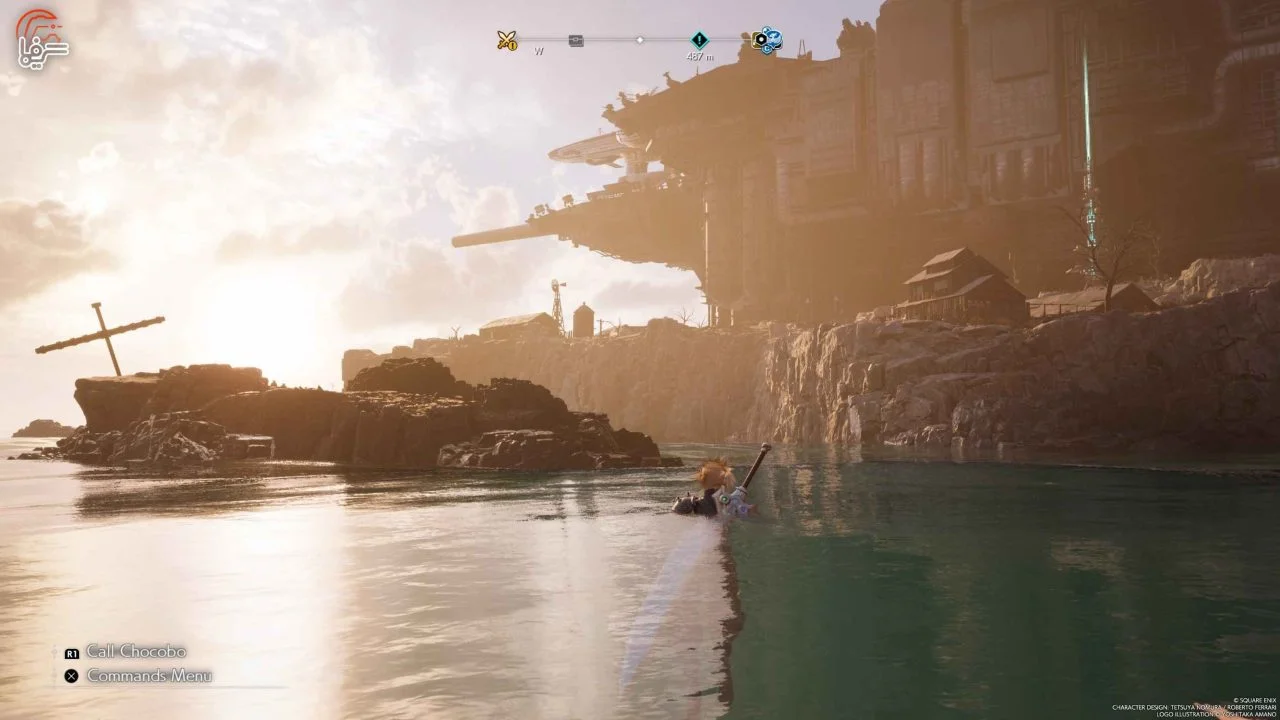
The ability to interact more with the environment is not limited to open areas. Remember it was said that the game gives each group member a chance to shine? This ‘chance to shine’ is not just narrative, during the game there are different sections where each character takes on the group’s leadership and you control them outside of battle, and each of these characters has a special ability and way of interacting with the environment!
For example, one can swing on objects in the environment with a rope, one can climb walls, another can solve various puzzles by throwing objects in the environment and … The ability to use special abilities and establish special interactions with different environments also exists in the game’s open areas; because each of these areas has a specific breed of Chocobo and just like the original game, each type of Chocobo gives the player a special exploration ability; one type can climb mountains, one can fly in the air, one can make very high jumps and …
These special abilities and the ability to establish special interactions with different environments do not have much depth and their use is limited and only for specific tasks; but it doesn’t have to be otherwise! These are just to bring variety into the gameplay in the game and not only do they do this successfully, but they solve one of the problems mentioned about the level design of modern series titles, namely ‘summarizing the difference between stages to their appearance and the lack of impact of the place where you play on the gameplay’!
Each of the special abilities and the special way of interacting with the environment that each group member has, although simple, make playing in each stage of the areas a little different from before and after itself, the difference between missions is not just summarized to their appearance and outside of battles, each mission has a special experience to offer. This also applies to open areas and the special abilities of each breed of Chocobo make exploring each of them a little different from the other and to do this, consider the ability of different Chocobos and sometimes to reach different parts of the environment, use them in a smart way.

As mentioned, Final Fantasy VII Rebirth has the best level design among modern series titles. This is the first time that while experiencing a modern Final Fantasy game, I don’t feel that the level design directly damages the game experience, but on the contrary, it constantly brings variety into the gameplay and always keeps the game experience fresh. The level design of this title is a step forward for modern series games and I hope that future series works will also adopt such an approach in their level designs.
Final Fantasy VII Rebirth is a very vast game in which there are many activities to do. To start, it’s better to talk about open areas; in each of the open areas, there are many activities to do; you can find special and powerful enemies, activate telecommunications towers, and dig the ground with Chocobo to find items and other things like this.
Although these activities can become monotonous, the reason that makes you want to do them is the reward system; by doing each of the main activities available in open areas, in addition to items and experience (Exp) for the group, you receive a special currency unit that you can use to buy very powerful Materia that cannot be obtained in any other way.
The existence of a crafting system is another thing that helps the game’s reward system in open areas; there is no need to say why it is not possible to fill the areas with items and special activities; the presence of raw materials throughout the open areas means that even if the search for a specific part of the environment does not result in you finding a special reward, this effort of yours is not completely futile and without reward.
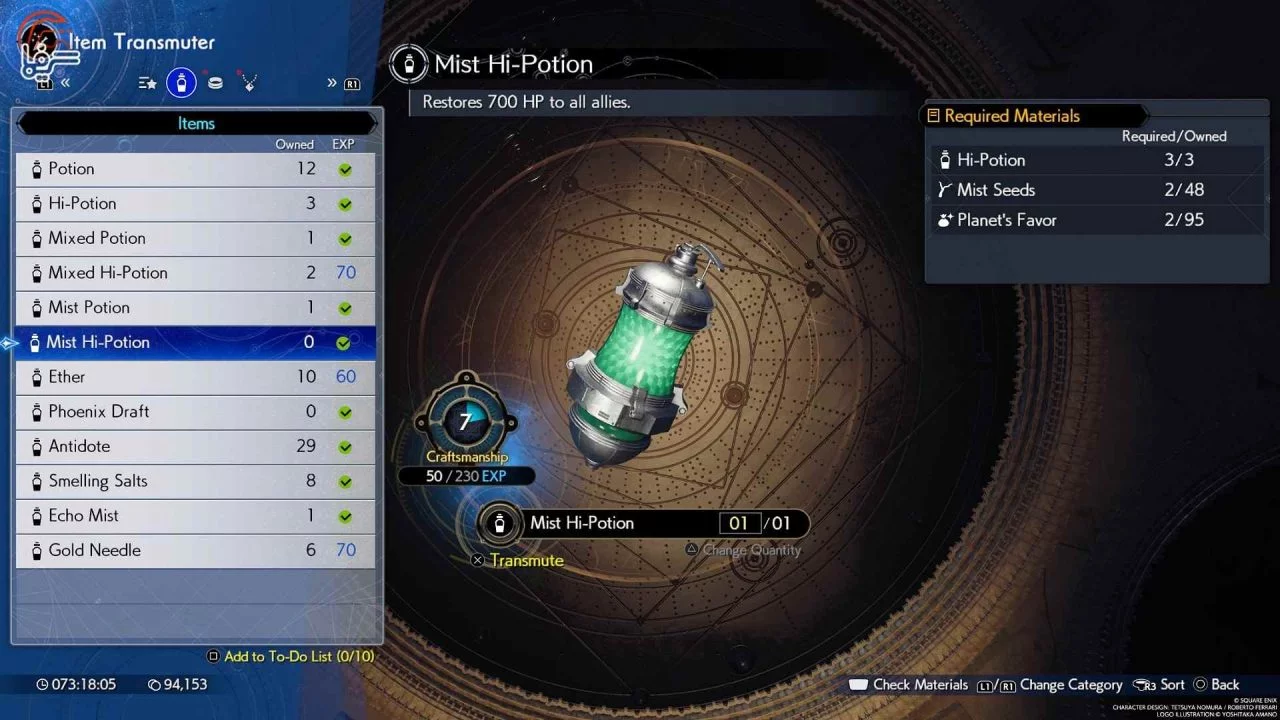
Another thing that improves the side activities available in open areas is the areas themselves! Each of the open areas is full of beautiful landscapes and places that you can discover by exploring the environment; you may find a waterfall, a flower garden, an abandoned hut, a sunken ship, and … in places where you didn’t know such things existed.
The combination of this with the reasons previously mentioned about level design makes the sense of exploration and discovery in large environments enjoyable. The sense of exploration and the good reward that comes with doing the side activities available in open areas act as a complement and make each other better, and overall, I can say that exploring and doing side activities in open areas is entertaining and has a good reward.
Another point worth mentioning is that activating telecommunications towers does not reveal the coordinates of all the activities available in an area and some of them can only be found by natural exploration in the environment; a completely appropriate decision that, without eliminating natural exploration, prevents you from being completely lost and aimless in open environments.

Side missions are another area that have received significant progress in Rebirth. Although these activities include several different types, here we will talk about all of them in general. One of the best things about side missions is that in many of them there is a simple gameplay idea that you probably won’t deal with outside of that specific mission, which makes many mission more interesting and special compared to others; you may be given several pictures of different places for a mission that you have to find, for a mission you ride a scooter and explore the environment, for a mission you take a picture of a specific thing and things like this.
From a narrative point of view, the missions you perform have not changed much with Remake; Cloud is still a mercenary who accepts any job; sometimes, the game uses the potential of this idea and in some side missions, you will face the strangest people and the strangest requests that can be interesting; but in most cases, it is unlikely that after completing a mission, you will remember anything about the character who gave you the mission or why you performed the mission.
The best narrative reason for experiencing side missions is that in Rebirth, other group members are much more involved in side missions than before and the discussions and conversations that take place between group members and during these missions are always very interesting and make you more familiar with the characters’ views on various issues.
The reward for side missions is usually very valuable and by doing them you receive very useful items and sometimes completely new weapons and it is unlikely that after performing a side mission, its reward will not be worth it. Another improvement of Rebirth that is not necessarily related to side stages, but you will deal with it more in these stages, is related to face-to-face conversations between characters that you can advance line by line.
In Final Fantasy VII Remake, watching these scenes was not interesting at all; in this category of conversations, characters were standing like statues in front of each other in 90% of cases and their body movements were summarized to very simple things like raising and lowering their hands; the directing of these scenes was also limited to very simple shot/reverse shots with a completely still camera and in summary, it can be said that in Remake, watching these scenes was not interesting at all.
Rebirth completely solves this problem! Now characters are no longer completely motionless during conversations; they walk during these conversations, bend and straighten, interact with the surrounding environment and … The directing of such scenes is also much more interesting; now you see characters from different angles and the camera is also moving in many situations; facial animations in these scenes have also improved significantly and as mentioned, Rebirth completely solves this problem and depicts such conversations in the best and most interesting way possible.

The crown jewel of the side activities in the game are indeed the mini-games! In Final Fantasy VII Rebirth, there are several different mini-games that offer a lot of variety. They range from the reconstruction and expansion of examples that existed in the original game, such as playing the piano and Chocobo riding, to completely new mini-games like a card game that can be played throughout the areas, and even very strange and funny cases like a football mini-game featuring animals!
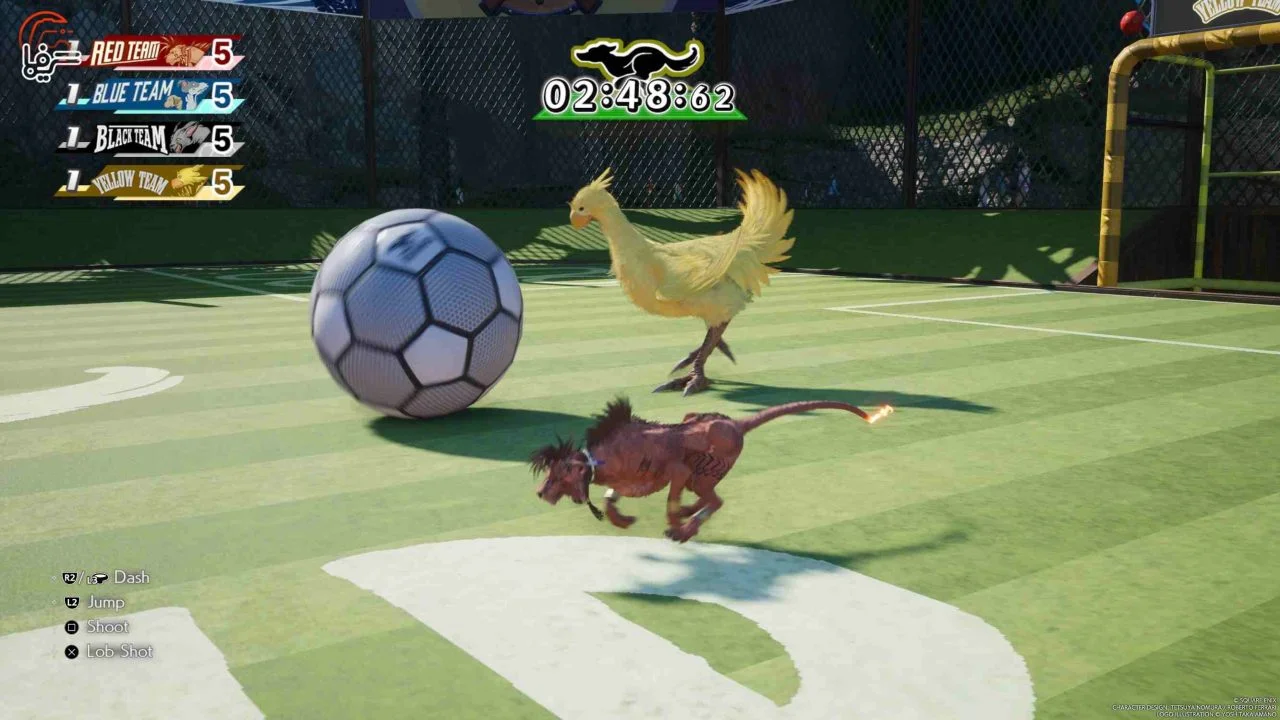
All these mini-games are very enjoyable and depending on your performance, you can receive various valuable rewards by playing them. These mini-games will always pleasantly surprise you and bring variety into the game in a way that nothing else can, keeping it fresh. I hope future games in the series will value this aspect more, as the positive impact of mini-games on this game and their role in keeping the gameplay fresh is completely felt!
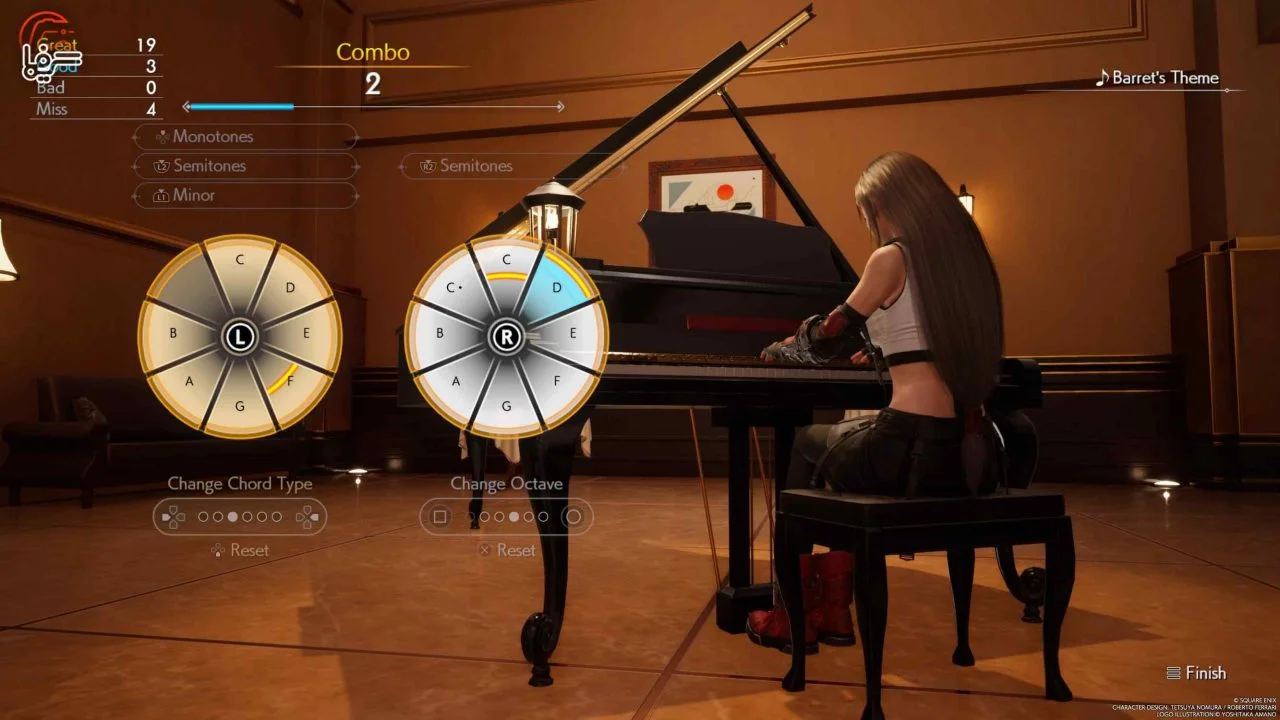
Of course, the game’s side activities are not limited to these items and there are things like the Combat Simulator, which was also in the Remake, and some other activities that do not fall into a specific category, are also present in the game; but generally, it can be said that side activities are good and suitable for the experience that the game intends to offer; as mentioned, this game is very vast; So, the variety and high number of side activities, especially mini-games, make it so that there are always many things to do and the game can entertain you for a very long time.

The first part was able to reconstruct the Materia system from the original game in the best possible way, preserving the features that made it special in the original game, and also combine turn-based (or more precisely ATB) and action battles in the best possible way; the result was one of the best combat systems in recent years! Final Fantasy VII Rebirth improves this combat system even more by fixing issues, making minor changes, and adding new mechanics and characters.
Perhaps the biggest problem with the battles in Final Fantasy VII Remake was related to aerial combat, and fighting flying enemies without using magic or a character capable of long-range attacks was, in a word, dreadful!
Rebirth solves this problem. Now, if you are controlling Cloud, immediately after dodging, if you press the square button, you can launch long-range attacks at enemies, and if you hold the square, you can quickly approach the enemy and fight him in the air. Also, now you can dodge in the air! Since Cloud is almost always in the group, this alone is enough to solve the problem of aerial combat, but the game also provides you with another method to deal with aerial enemies.
Now, all characters’ Folio (the same weapon upgrade system from Remake with some changes) have added various moves that allow characters to use long-range attacks with different elements without using the magic bar (MP) and only by consuming one ATB bar.

These two changes completely solve the problem of aerial combat that existed in Remake. The good thing is that these changes do not make characters with long-range attack capabilities useless, and in case of fighting flying enemies, using these characters is still the best way to deal with such enemies.
Among the new mechanics added to the battles, we can mention group moves, which come in two types: Synergy Skills that allow you to perform various moves using two different characters without consuming any ATB; these moves include various tasks such as repelling enemy long-range attacks, forming a very powerful kind of shield, and executing a very slow and powerful attack. These moves are very situational and using them makes characters vulnerable for a relatively long time; but if used correctly, they can be very powerful and effective.
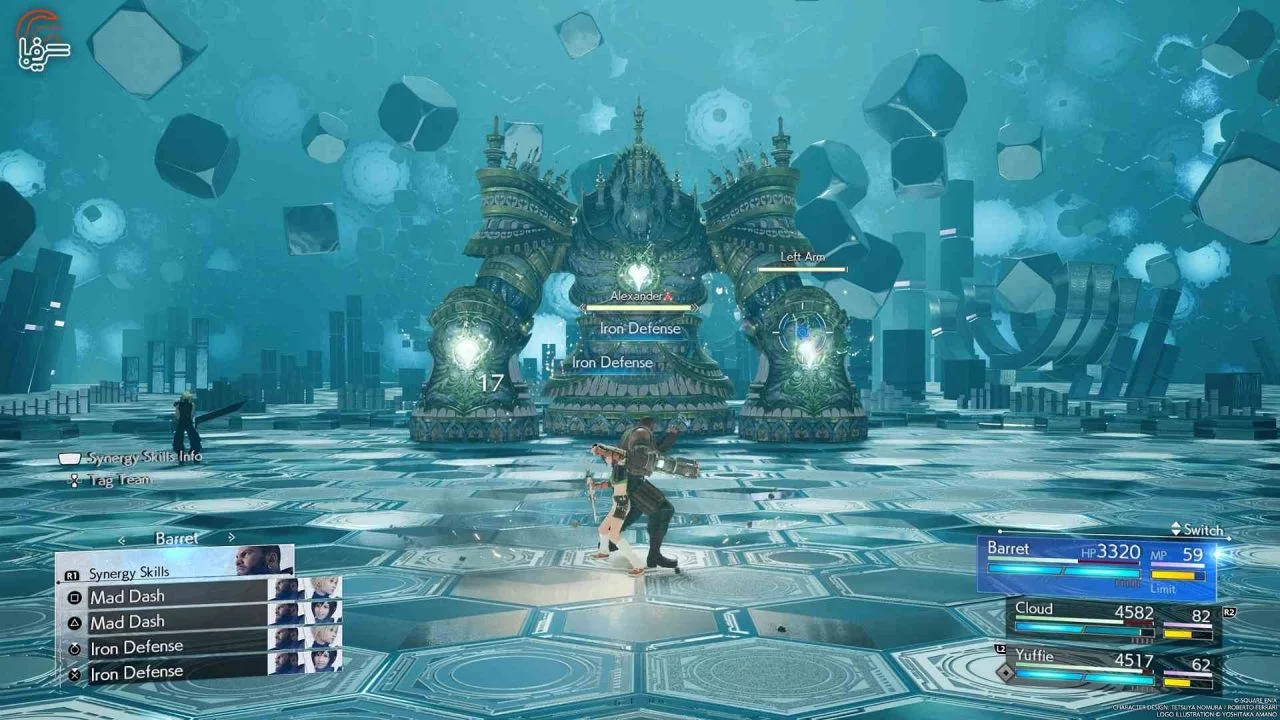
The second type of group moves are Synergy Abilities; moves that are performed with the cooperation of two different characters and to perform them, both of these characters must have used a specific number of ATB bars from the time they entered the battle. These moves are very flashy and for any two characters you can think of, there are several different types of these moves, all of which have their own unique appearance and animation!
The cooperation of each of the characters with each other and the way each of them expresses their character traits during these moves is always interesting and attractive! The use of Synergy Abilities is less for inflicting damage and more for giving positive attributes to characters; by using these moves, you can receive attributes such as increasing the number of ATB bars from 2 to 3, increasing the Limit Break level, giving an infinite magic bar for a limited time, and other things.
Other notable changes made include changing the speed of dodging and a new defense system. The Parry Materia that existed in Remake has been removed from Rebirth and the distance a character travels by dodging and the speed of this action has increased; a completely correct decision! Because in Remake, dodging to prevent damage was not very useful and usually resulted in full damage, and it was more effective and less risky to completely ignore it and defend all attacks; even so far, such a thing is considered a flaw, but the thing that made this flaw in Remake worse than this was the Parry Materia that allowed you to dodge at a much faster speed and at the same time, defend the attacks! The existence of this Materia in Remake made the best and at the same time the simplest way to deal with attacks, to dodge constantly and thoughtlessly using the Parry Materia.

In Rebirth, with the removal of the Parry Materia and the increase in speed and distance that is covered by dodging, both dodging and defending are useful, and you need to pay more attention to which method you use to prevent damage. Also, a new defense system has been added to the battles that allows you to defend as soon as a blow is about to hit you, so you don’t take any damage!
Alongside these, new controllable characters that each have their own unique strengths, weaknesses, and feel when playing, new abilities and Materias, are other things that have been added to Rebirth’s battles, and personally, I consider all of them to be positive.
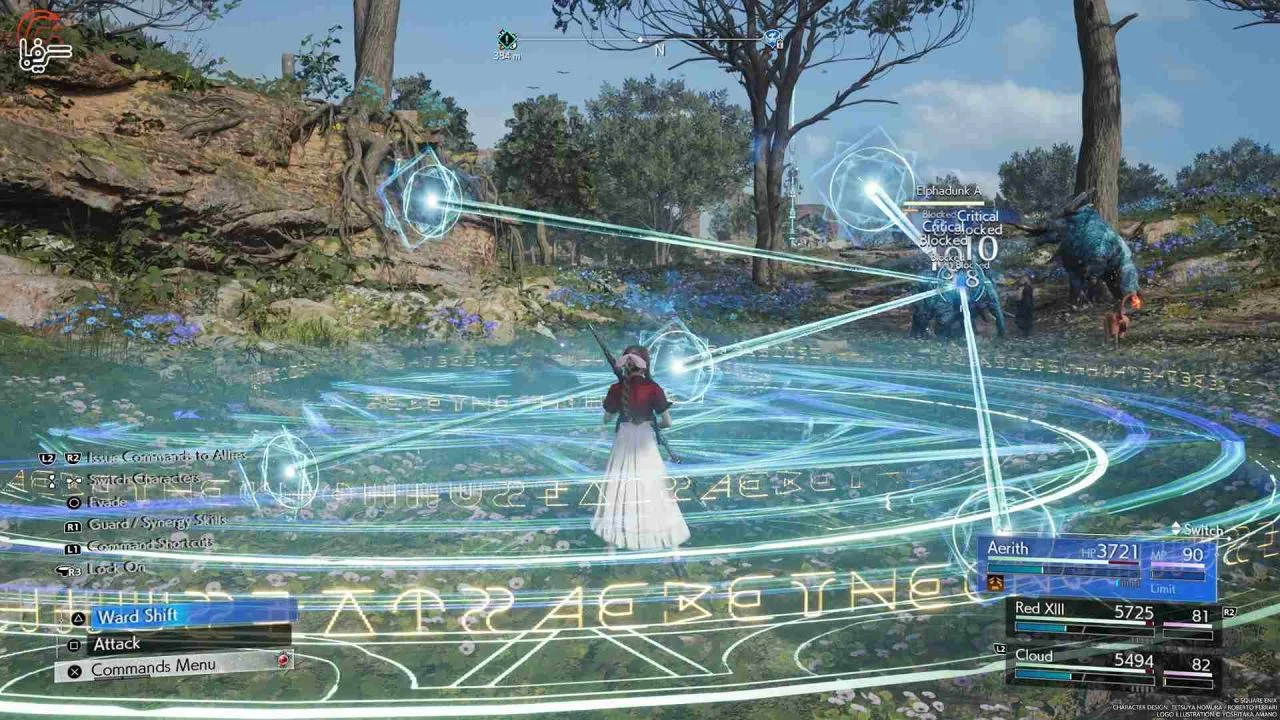
Just like FF7 Remake, the goal of battles in Rebirth can be summarized as follows: ‘Find the enemy’s weak point, stagger it, and then inflict massive damage with powerful attacks!’ Each enemy has a specific weakness; to stagger some, you need to attack them with a specific magic, for others, you need to attack them at a specific time, and there are much more complicated cases. The number and variety of enemies in Rebirth are extraordinary, and the combination of this with what was said about the enemies’ weaknesses makes the game’s battles always attractive, and to win each battle, you need to adopt a different approach.
The best part of the battles, however, are the top-tier boss fights! There are a large number of bosses in the game, and fighting them is always very exciting, and in addition to the common things you expect from a good boss, such as an attractive moveset, eye-catching design, appropriate music, etc., what makes boss fights in Final Fantasy VII Rebirth attractive is that throughout the game, the bosses of this title constantly challenge your knowledge and learnings from the combat system, and if you don’t respect the mechanics of these bosses, it won’t be easy to fight them.

Considering these points, not only does Final Fantasy VII Rebirth have one of the best combat systems in recent years, but this title is also a serious contender for the best combat system in the history of action role-playing games!
Visually, Rebirth is also a stunning game! You can hardly find a title that has such a variety of areas and landscapes, and throughout the game, you will see different types of natural, industrial, supernatural environments, etc., each with its own unique color and appearance.

The game’s visual variety is so extensive that if you show someone a few carefully selected images from its different areas and scenes, they might think these images are from several distinct games! Each of these scenes is filled with details. Every NPC in the virtual environment has a unique appearance and is performing a specific task. The number of objects and NPCs that appear on the screen at the same time is astonishing. You could spend hours marveling at the details in each environment and the tasks and conversations that different NPCs are engaged in.
This level of visual diversity and detail gives a genuine handmade and lively feel to all parts of the game, making the game world more than just a land. Exploring different areas and seeing their differences with others gives you the feeling of exploring a vast planet! Aspects such as the quality of models, textures, animations of all characters and enemies, and various graphical effects are also at the highest level you can expect from a ninth-generation game.
However, the game’s visual effects are not flawless. Some small objects in large environments do not have the best possible quality, animations of ascending and descending different levels can sometimes seem stiff and artificial, many objects in the environment load in front of your eyes (Pop-Up), tall plants in the environment are completely stationary and passing through them does not cause their branches and leaves to shake, among other minor issues. But if I say that these issues significantly detract from the game’s beauty, I would be lying!
Some of these graphical flaws, such as the low quality of the model and texture of objects in the environment, were also present in the remake, but unlike the remake where the negative impact of such shortcomings on the game’s visual effects was fully felt, in Rebirth these graphical flaws are nowhere near as severe as the remake and you almost never feel that these shortcomings are damaging the game’s visual effects. If these flaws are the price for the extraordinary number of objects and NPCs that are simultaneously on the screen, I say it was worth it!
Another noteworthy point is related to the pre-rendered cutscenes (or more precisely FMV); these cutscenes, compared to other cutscenes, seem a bit blurry and seem to have Film Grain. If putting Film Grain on these cutscenes was an artistic decision by the developers, in my opinion, such a decision did not work at all and as mentioned, such a thing makes these cutscenes seem a bit blurry; but what I guess has happened is that the pre-rendered cutscenes of the game and probably to reduce the size of the game, have been heavily compressed; because in the remake, this problem of blurriness and something that looks like Film Grain was not observed. If the reason for such a thing is the compression of the file of these cutscenes, I hope that with an update, the uncompressed file of these cutscenes will be added to the game, but if such a thing was an artistic decision by the developers (which is unlikely), it did not work at all! I don’t want to make this issue too big, because these cutscenes are still stunning, but it’s a shame that they are not seen in the best possible way!
The soundtrack of Final Fantasy 7 Rebirth is excellent as you would expect from this series! The music in this game is so much that even if the amount of them was half of this, I would still praise the large number of them! The game’s soundtrack includes creative rearrangements of the original game’s songs, to completely new and original pieces and covers a wide range of styles and moods, and sometimes unexpected; these are not just music that matches the mood of a specific part of the game or elevates the gaming experience; but they are music that you still want to listen to after the game is over!
Another point worth mentioning is related to the diegetic music in the game; throughout the game and through things like the radio in stores and street bands, you can hear creative rearrangements of the original game’s music! Not only are these music very pleasing to the ear, but their diegetic nature in a special way that cannot be done with anything else, brings life to the game world. The presence of such music in the game is another one of the things that show how much effort has been put into making all parts of this game.
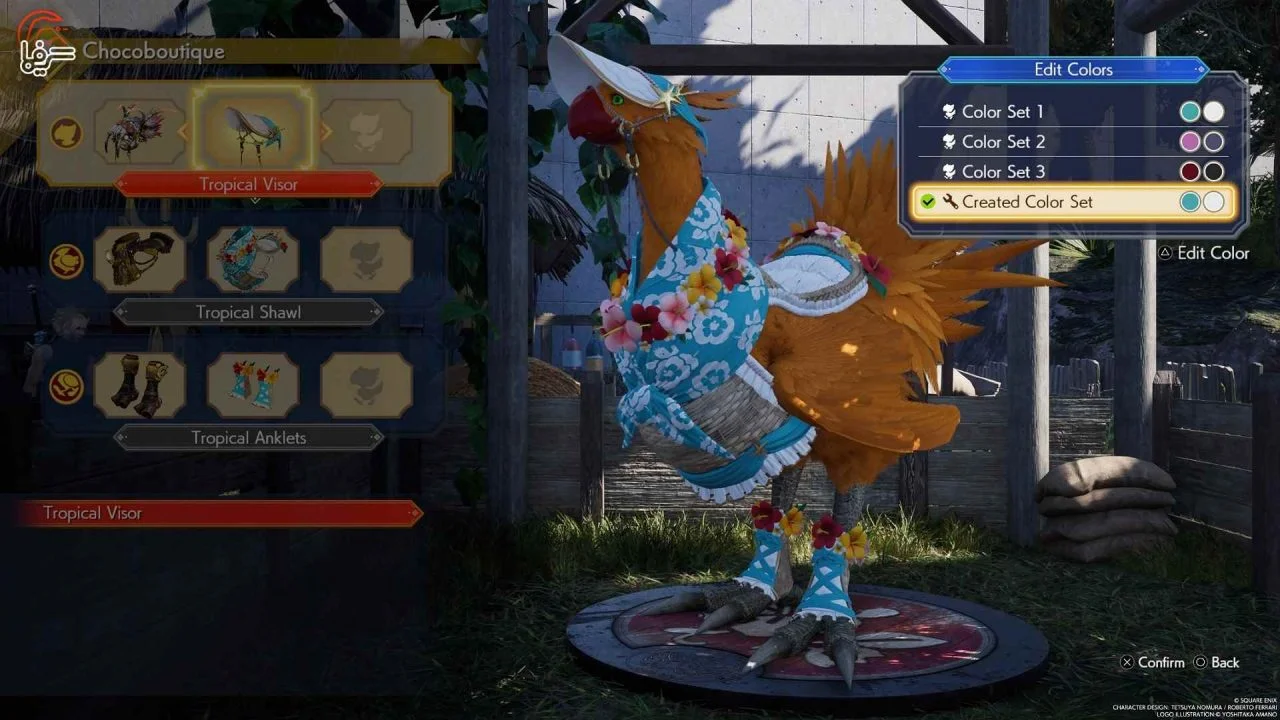
During 70 hours of gameplay, no significant or noteworthy bugs or technical issues were seen. The game was experienced in Graphics mode and has equal frame pacing. It doesn’t matter how many enemies, various graphical effects, and consecutive and simultaneous commands you give to the characters, the frame rate of this game does not drop even a single frame.
In summary…
Final Fantasy 7 Rebirth is a title that has made great effort in every aspect, and there are few games that offer this amount of content with such a level of quality in all sections and always maintain their freshness. The game succeeds in conveying the narrative tone of the original game and offers an engaging narrative full of memorable moments. The combination of these elements with stunning visual effects, one of the best combat systems in the history of action RPG titles, a soundtrack worthy of the name Final Fantasy, and the best level design of the series in recent years, makes this title easily the best single-player franchise game in the last three console generations (7, 8, and 9).
Pros:
- An engaging narrative that evokes the mood of the original game, filled with memorable moments and characters, superb cutscenes, and appropriate voice acting.
- One of the best combat systems in the history of action RPG titles, with an extraordinary variety of enemies and top-tier boss fights.
- A wide variety of mini-games that are highly entertaining and constantly introduce diversity into the game.
- Stunning visual effects with a unique variety of landscapes and excellent design of characters, environments, and enemies.
- A wildly impressive soundtrack.
- The best level design in the series in recent years.
Cons:
- There are minor issues in terms of character development, storytelling, some specific animations, and a few other things that were mentioned throughout the article. Although none of them are so significant that they would have a dedicated place in this section, they cannot be ignored.
9.7/10
This game was experienced and reviewed on the PS5 (Graphics mode), using the code provided by the publisher (Square Enix).



Comments
Can’t wait to play it 😍